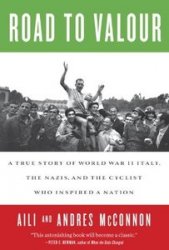At the heart of the study of gender lies ‘‘social construction’’ - the idea that the capacities, expectations, and even the definitions of ‘‘men’’ and ‘‘women’’ are not derived from biology, but social practice. Given the foundational role of classical antiquity in formulating the distinctive ‘‘look and feel’’ of western European culture, it is understandable that the art, literature, and history of the Greco-Roman world was intimately involved in the articulation of normative definitions of masculinity and femininity.
The study of gender is political. It invites us to question the effects of social institutions. In this respect, it is far from clear that the classical tradition is something worth celebrating. Western culture has shown itself remarkably sympathetic to the misogyny of antiquity. The traditional privileging of male activity and its anxieties about female power in Greece and Rome have regularly found an audience who have been only too keen to hear and repeat its phallocentric maxims. Significantly, it is often difficult to separate out cause and symptom in these manifestations of classical patriarchal ideology. As a consequence, analysis of the relationship between gender and the classical tradition raises a number of questions about the value of the latter in western culture. Is such male chauvinism the inescapable product of the classical tradition - the bitter pill that needs to be swallowed when we drink from the fount of antiquity - or has the classical world just been excerpted and edited to validate contemporary prejudices? To put the question more directly, can we hold classical antiquity responsible for western antifemale attitudes? Are figures such as Aristotle the founders of the western philosophic tradition or female enslavement? Can we have one without the other? Such matters have divided feminist scholarship (Bar On 1994; Spelman 1983; Witt 1998), with some thinkers even arguing that such debates are themselves symptomatic of a patriarchal Aristotelian logic that fetishizes reason (Rooney 1994; Irigaray 1985, 1993). Whatever conclusions we reach on these
Questions, there should be some recognition that the story is never going to be a simple one of male oppressors and female victims. The images of masculinity promoted by the classical tradition are as limiting for men as they are for women. Moreover, alongside the repressive deployment of the classical past, there exist a number of moments where we see the tables turned and disempowered groups acting as agents in formulating their own counter-hegemonic classical tradition. It is a complicated field. The study of gender leads us inexorably to consider questions of power, resistance, sexuality, the body, and desire.
These issues cut across a number of disciplinary boundaries and categories. There is no single place where an unquestioned and definitive representation of either man or woman resides. The perception of either sex shifts, sometimes dramatically, sometimes subtly, as one moves from drama to painting to sculpture to poetry to prose. We should be wary of being too reductionist in our analysis. Each genre plays by its own rules. Comparing Rubens’s erotic female nudes to the monstrous, splayed bodies found in drawings of gynecological autopsies should remind us just how fragile the notion of‘‘flesh’’ is, let alone ‘‘woman.’’ The nature of man and woman is the topic of a ‘‘cultural conversation’’ carried across time, place, and genre. Each part of the societal fabric has contributed to this discussion. Different moments brought different aspects into focus. Each contribution has often raised more problems than it solved. In what follows, I would like to outline some of the ways in which this conversation has been conducted as well as to focus on some of the important topics of debate.




 World History
World History




![Stalingrad: The Most Vicious Battle of the War [History of the Second World War 38]](/uploads/posts/2015-05/1432581864_1425486471_part-38.jpeg)




